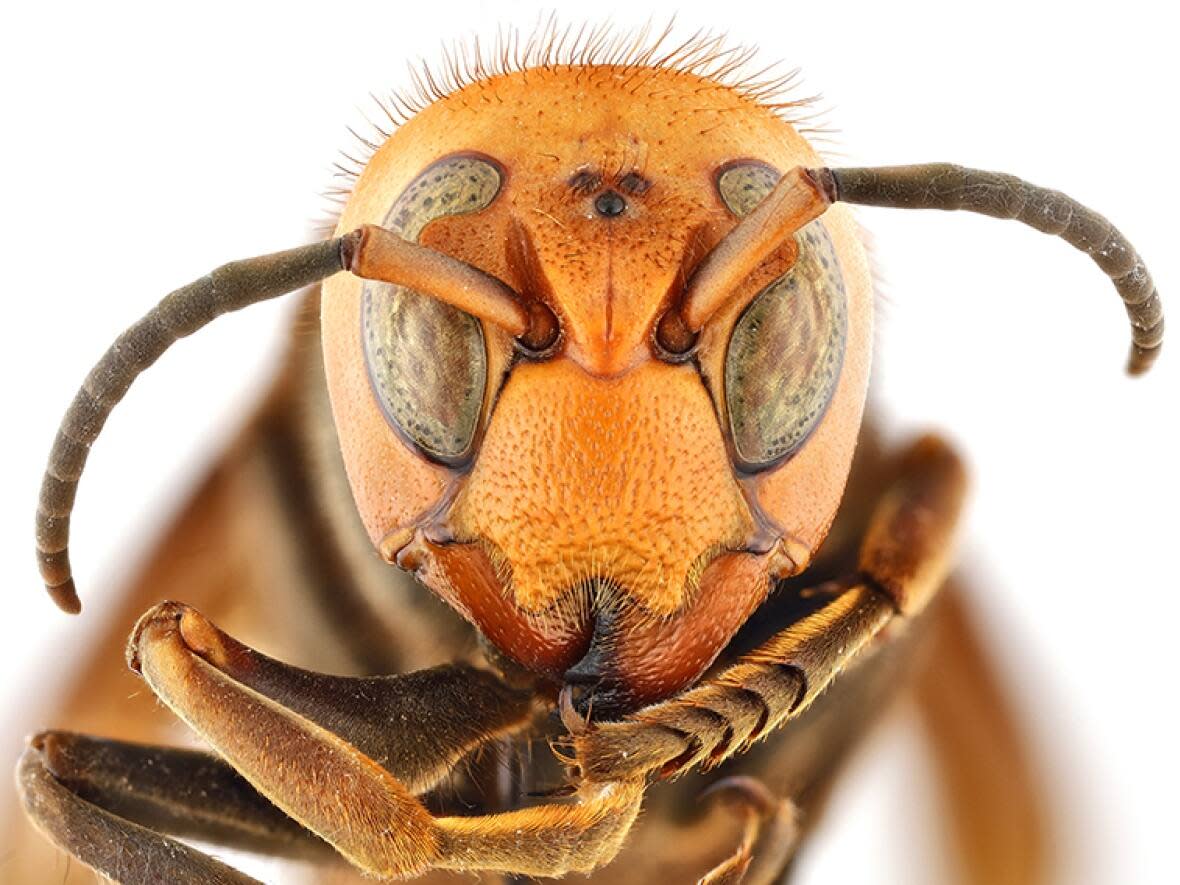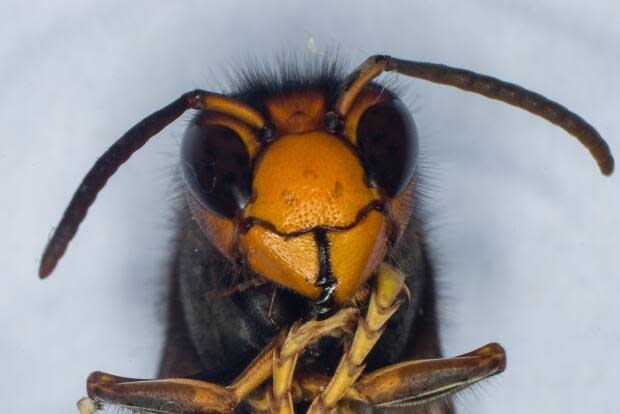Buzz off, murder hornet! Scientists rename insect to reduce fear, stigma

Scientists have removed the sting from the name of the world's largest hornet in a bid to dispel fear and stigma about the insect.
In a news release on Monday, the Entomological Society of America (ESA) announced it had renamed Vespa mandarinia — commonly known as the murder hornet or Asian giant hornet — as the northern giant hornet. The Entomological Society of Canada has followed suit.
An invasive species, authorities in British Columbia and Washington state have been working to eradicate the hornet from their regions since specimens were first discovered either side of the border in 2019.
The northern giant hornet is native to eastern Asia — mostly Japan, Korea and Taiwan — and feeds on honey bees and other small insects. They can reach up to five centimetres in length and have a wingspan of four to seven centimetres.
Their sting injects a large amount of venom, which can be very painful and may also cause swelling, redness and itching. The hornets rarely attack humans unless their nest is disturbed.
Usage of 'Asian' may stoke racism
The ESA says Washington State Department of Agriculture (WSDA) entomologist Chris Looney proposed the name change, citing the need for inclusive public communication about the insect.
The entomologists' organization says the change follows new guidelines adopted last year on acceptable common names for insects, which prohibit names that refer to a racial or ethnic group, or names that may stoke fear.
"Amid a rise in hate crimes and discrimination against people of Asian descent, usage of 'Asian' in the name of a pest insect can unintentionally bolster anti-Asian sentiment," ESA's release wrote.
Based on the new guidelines, the organization has also renamed Vespa velutina — a species commonly known as the Asian hornet or yellow-legged hornet — as southern giant hornet, a change also approved by the Entomological Society of Canada.

'Key ecological role'
WSDA said on Monday it will follow ESA's recommendation and update its website and printed materials to reflect the new common name in the coming weeks.
Provincial apiculturist Paul van Westendorp says the B.C. government should follow suit, and that the "murder hornet" name paints the insect in an inaccurate light.
Deaths from hornet stings have occurred, but only in extreme cases.
"That [name] got the attention of a lot of people, of course, [but] the sad part of it is it doesn't reflect at all of what this particular creature does," van Westendorp said.
"It's important to remember that they are really the ones that keep many other insect populations under control. Northern giant hornets play a key ecological role in our environment."
Northern giant hornets were spotted on Vancouver Island in 2019 and in the southern Fraser Valley in 2020.
Van Westendorp says there was only one sighting near the B.C.-Washington border last year, and there have been no sightings at all this year so far.


